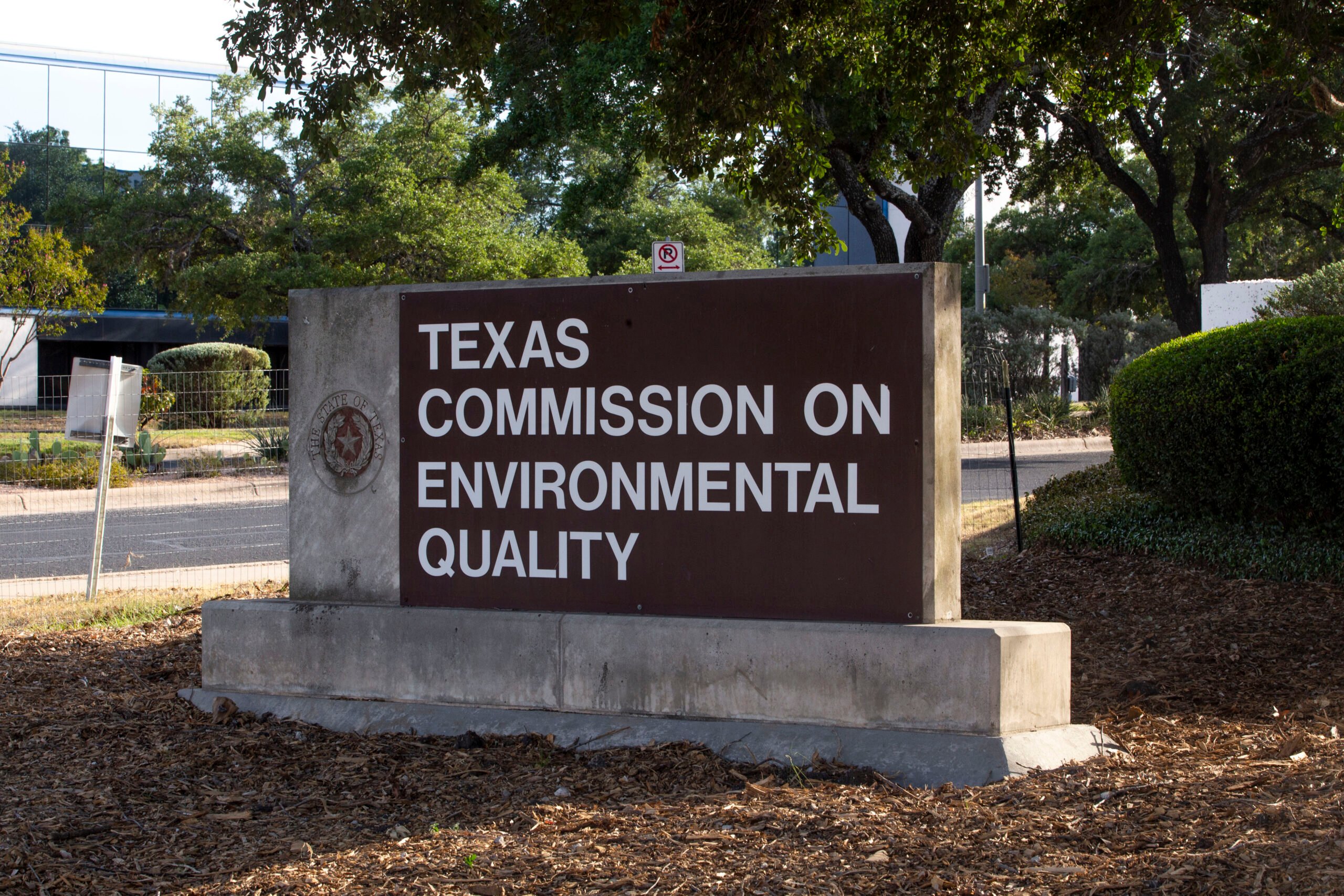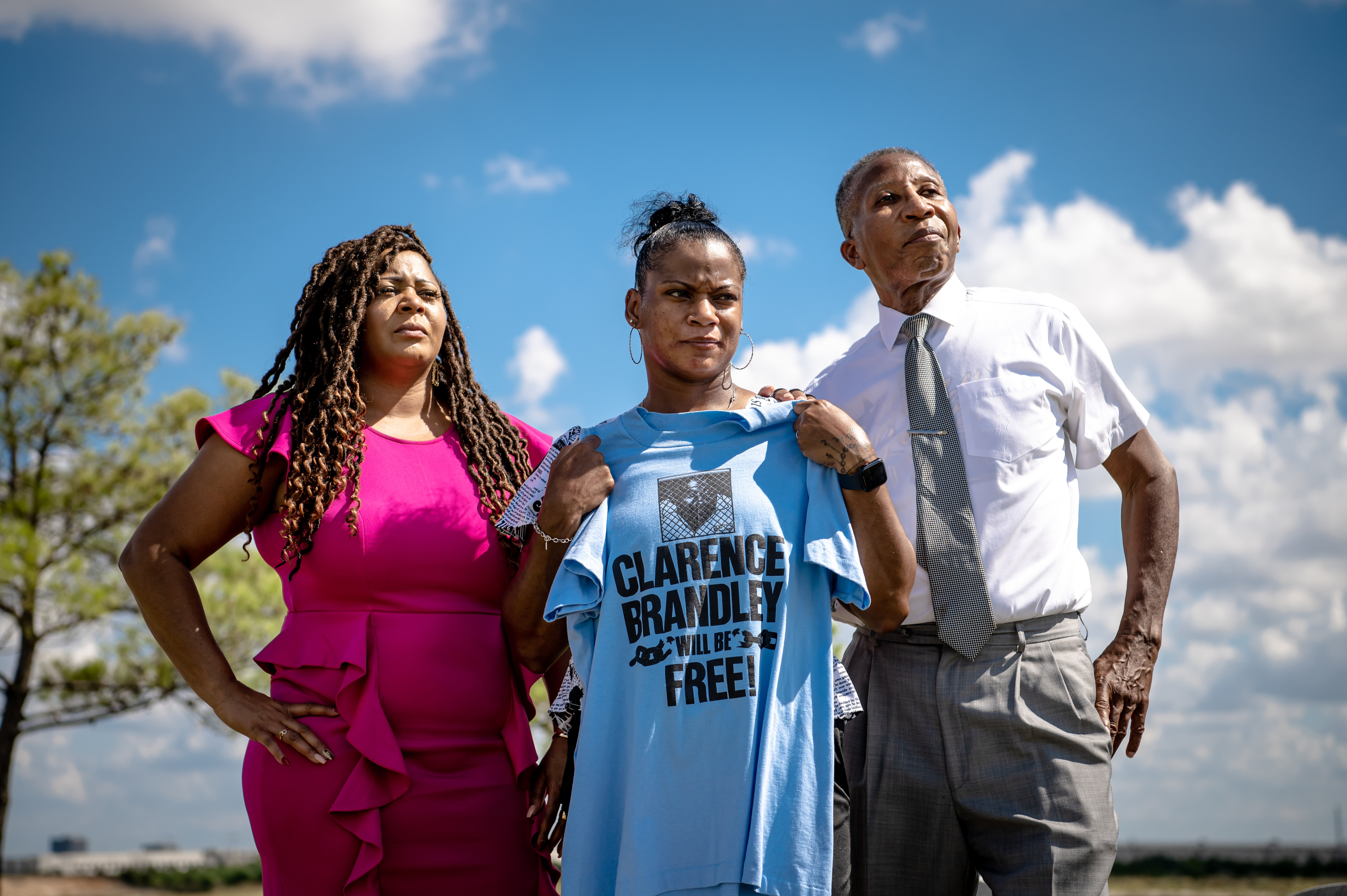
Texas Wants to Adopt Outdated Cancer Risk Standard Despite Concerns
The state is proposing to approve a 17-year-old standard that leading scientists and public health officials call inadequate.

This article originally appeared on Inside Climate News, a nonprofit, independent news organization that covers climate, energy and the environment. It is republished with permission. Sign up for their newsletter here.
The Texas Commission on Environmental Quality (TCEQ) has quietly proposed maintaining a target cancer risk level for air pollution permits that scientists and public health officials consider inadequate to protect public health, especially for communities like those east of Houston that are exposed simultaneously to many sources of industrial emissions.
The move comes after a state commission on accountability last year found “a concerning degree of general public distrust and confusion focused on TCEQ,” and the Texas Legislature adopted directives this year instructing the TCEQ to transparently review and approve “foundational policy decisions” that had never been publicly approved, including “the acceptable level of health-based risk” used in pollution permitting.
In response, TCEQ proposed, without public hearings or additional study, to formalize its existing target cancer risk level of 1 in 100,000, meaning that only one excess case of cancer among 100,000 similarly exposed people would result from each individual pollutant from each individually permitted site.
The agency has been using that risk level since 2006, said a TCEQ spokesman, Richard Richter. He said TCEQ’s target “is reasonable from a regulatory perspective and is protective of human health.” It “insignificantly contributes to an individual’s lifetime cancer risk,” he said.
But by looking at each site and chemical separately, scientists and public health officials say, the assessment method drastically under-represents the actual risks faced by communities situated near industrial complexes, like the great conglomerations of fuming refineries and chemical plants that dot the Texas coast.
“TCEQ should be proactive and change their cancer risk to protect individuals living in high risk communities,” wrote Latrice Babin, executive director of Harris County Pollution Control Services, in official comments. She asked for a target risk level of one in 1 million.
“TCEQ should be proactive and change their cancer risk to protect individuals living in high risk communities.”
“TCEQ is scrambling to adopt work from nearly 20 years ago with no analysis,” wrote a coalition of Texas environmental groups led by Air Alliance Houston.
The City of Houston, the nation’s fourth-largest city and home to its largest petrochemical complex, has also asked TCEQ to tighten standards. Bill Kelly, Houston’s director of government relations, said TCEQ should “absolutely” lower its target cancer risk level.
Richter did not respond to a request for interviews with TCEQ’s politically appointed leadership, but said that the agency, to satisfy the Legislature’s directives on public participation, sent its proposal for a target risk rate, along with instructions on filing comments, to more than 3,300 email addresses on its toxicology listserv, which goes to subscribers from both industry and the general public. The proposal also appeared September 1 on page 182 of the Texas Register, a weekly journal of state agency rulemaking.
In response, TCEQ received more than 200 official comments asking the agency to lower its target risk level to one in 1 million. Just one response came in support of its proposed risk level: the Texas Chemical Council, a chemical industry lobbying group, wrote, “The proposed level is protective of public health.”
Target risk levels
The target risk level helps determine the volumes of carcinogenic emissions that industrial operators are allowed to release in Texas, seat of the nation’s oil, gas, and petrochemical industry.
The U.S. Environmental Protection Agency sets the upper limit of cancer risk level from permitted air pollution at 1 in 10,000, and sets a target level at 1 in 1 million. Richter called TCEQ’s target rate the “logarithmic center” of that range, and said it allows ample space for corrective action before permitted pollution sources exceed the EPA’s upper limit for cancer risk.
He said the agency has used its target risk level since 2006 when it formalized its guidelines for toxicity standards. Those guidelines attribute the figure to standards set by California in 1986. Those guidelines also produced a broad loosening of air pollution health standards in Texas, according to a 2014 investigation by Inside Climate News and the Center for Public Integrity.
Richter pointed to a 2010 survey of state air permitting policy by Michigan’s environmental regulator, which found that 20 U.S. states didn’t evaluate cancer-causing “air toxics” when permitting new pollution sources. Of the 28 that did, 14 states used target risk levels to set limits. Eight used 1 in 1 million, including California. Just one, Louisiana, used the upper end —1 in 10,000.
Two, Texas and Minnesota, used 1 in 100,000. (Georgia and Rhode Island used 1 in 1 million for some toxins and 1 in 100,000 for others.)
Cumulative impacts of pollution
That figure doesn’t represent the target cancer risk for entire states. It’s the target cancer risk resulting from each individual pollutant from each individually permitted facility. Where many facilities emit chemicals across vast industrial landscapes, scientists say, all those supposedly insignificant contributions can add up—or even multiply when they interact.
“These numbers often underestimate the true risk,” said Tracey Woodruff, director of the Environmental Research and Translation for Health Center at the University of California San Francisco.
That’s why, scientists say, tighter standards are needed to account for the cumulative impacts of pollution that disproportionately impact underserved and vulnerable populations.
“The old way of doing things is to look at one pollutant at a time, one emissions source at a time, but in reality no one is exposed to one pollutant at a time,” said Jill Johnston, director of the Environmental Justice Research Lab at the University of Southern California in Los Angeles. “There’s been a shift in moving towards cumulative risk characterization.”
“The old way of doing things is to look at one pollutant at a time, one emissions source at a time, but in reality no one is exposed to one pollutant at a time.”
The science isn’t new, said Wilma Subra, an environmental consultant in Louisiana who studied cumulative impacts of air pollution for the National Environmental Justice Advisory Council in the early 1990s. But it has been difficult to incorporate into air permitting.
“Sometimes you have 20, 30, 40 or more chemicals, some of which have standards and some of which do not, all in the air and crossing the fence line,” she said. “You can make statements that each of these chemicals are meeting the standard in the air, and you just ignore the cumulative impacts.”
TCEQ guidelines say the agency assesses cumulative risks from pollution in accordance with state and federal law. But outside experts say that’s not always what happens.
“Right now when it comes to air toxics, TCEQ looks at one air contaminant, one site. Each air contaminant is evaluated on its own coming from one site,” said one air permitting consultant who used to work for the TCEQ and requested anonymity to preserve his business relationship with the agency. “If you’re only looking at benzene at just one site, but you’re surrounded by refineries that have a high concentration of benzene liquids being stored, that may not be a comprehensive view.”
The mixture of different pollutants can drastically increase toxicity, according to Bruce Lanphear, a clinician scientist at the British Columbia Children’s Hospital and a professor of health sciences at Simon Fraser University in Vancouver.
The effect has been shown with tobacco, which is relatively easy to study, Lanphear said. Smoking tobacco can increase a person’s risk for lung cancer by a factor of 10, while exposure to arsenic can increase the risk by a factor of two. But the combination of smoking and arsenic exposure has been shown to increase risk by a factor of 25.
“There is a big multiplicative risk because you have two toxic pollutants that magnify the effect of each other,” he said. “That’s got huge implications if you’ve got lots of different chemical plants in a place like Houston.”
With tobacco users, he said, it’s easy to measure individuals’ exposure and compare that with nonsmokers. For the plethora of industrial air pollutants, gauging exposure and effects is much more complicated—and studying their combinations is even more so.
“It’s challenging, but the regulatory agencies should be doing it,” he said.
A tradeoff of costs
Short of modeling cumulative impacts for every new permit, agencies can lower their target levels to acknowledge that cumulative effects generally raise the overall cancer risk from emissions, scientists say.
The EPA’s risk assessment framework for air toxics permitting calls for “an ample margin of safety to protect public health.”
“I prefer a target risk of 1 in a million,” said David Ozonoff, chair emeritus for environmental health at Boston University.
When the cumulative effects of pollution are poorly understood, Ozonoff said, erring toward caution “is more in line with public health philosophy.” But it comes with an additional financial burden to the businesses that need air pollution permits to operate.
“The costs and the benefits usually accrue to different groups of people. One group gets the benefits and another group pays the costs.”
“The cost of more protection might be in terms of profits or jobs while the cost of less protection is in lives and suffering,” Ozonoff said. “The costs and the benefits usually accrue to different groups of people. One group gets the benefits and another group pays the costs.”
In Texas, public health advocates call the costs a reasonable burden to place on big industry, especially with major operators like ExxonMobil, which runs one the nation’s largest pollution sources east of Houston and posted a record $56 billion profit last year.
“I can’t throw trash over my fence line. Why can industry throw trash over its fence line?” said Jen Powis, managing attorney for Earthjustice’s Gulf regional office in Houston. “Industry has the financing and the dollars to make it less with pollution control equipment.”
In their comments requesting a lower target risk level, the Texas environmental groups said TCEQ had not “provided any evidence that this would be cost prohibitive to applicants across the broad range of air permitting programs.”
The Texas Chemical Council, in its comments, said it “commends the TCEQ for its consideration of risk/benefit tradeoffs in establishing its [target risk levels] which make levels achievable.”
‘A concerning degree of general public distrust’
The standard is up for discussion in Texas because Texas Sunset Commission, which reviews each state agency every 12 years, found in its 2022 report on TCEQ “a concerning degree of general public distrust and confusion focused on TCEQ and its ability to effectively regulate in the public interest.”
Distrust, the report said, stemmed from a lack of transparency and opportunities for public input. Many of TCEQ’s core policies, like its target cancer risk level tucked into its 347-page toxicology guidelines, are encoded in lengthy scientific documents that had never been publicly approved.
“This scientific information must ultimately be transformed into regulatory standards,” the report said. “Deciding the acceptable level of exposure and effects on the public … is a policy decision that governs what facilities may be built, what technology they must employ, and what level of safety monitoring must occur.”
It recommended that TCEQ “affirmatively and publicly adopt these policies” and “provide opportunities for the public to make comments before the commission on what those standards should be.” The Legislature adopted the recommendation as a directive this year.
Carolyn Stone, a 62-year-old community advocate who lives nearby Houston’s industrial sector and regularly engages with the TCEQ, didn’t find out about the proposed cancer risk level until late September, when local environmental groups began to spread the word. Her area of Channelview is in the 94th percentile of cancer risk from air pollution nationally according to EPA screening tools.
Stone, a retired office worker who runs a group called Channelview Health and Improvement Coaltion, said, “TCEQ has not sent me a flyer notifying me. And you would think that as a community in that high of a percentile, we would have been some of the very first they’d attempt to notify.”
The omission didn’t surprise her. She has lived in Channelview since 1981 and persistent frustration with environmental regulators finally moved her to start her group in 2019. In public meetings with the TCEQ, Stone has told the regulators that pollution from nearby facilities harms locals’ health, and she’s asked them to require better pollution control technology on applications for new pollution permits in the area.
“Their response is basically that the companies ran their tests and according to their tests, their actions won’t be above the limits,” she said. “I really haven’t had any positive interactions with TCEQ, I’m thoroughly disappointed in them.”
Alejandra Martinez of the Texas Tribune contributed to this report.



